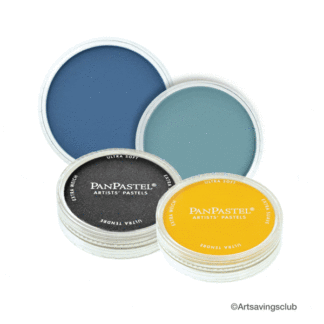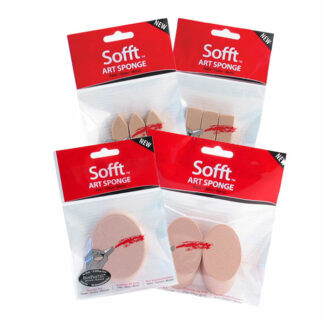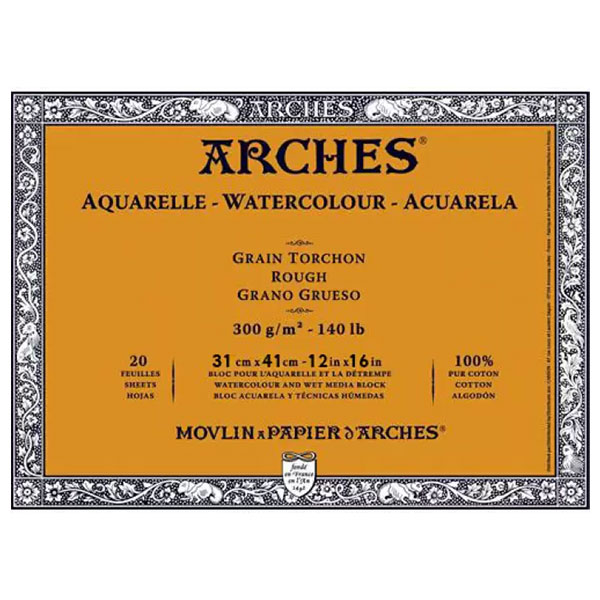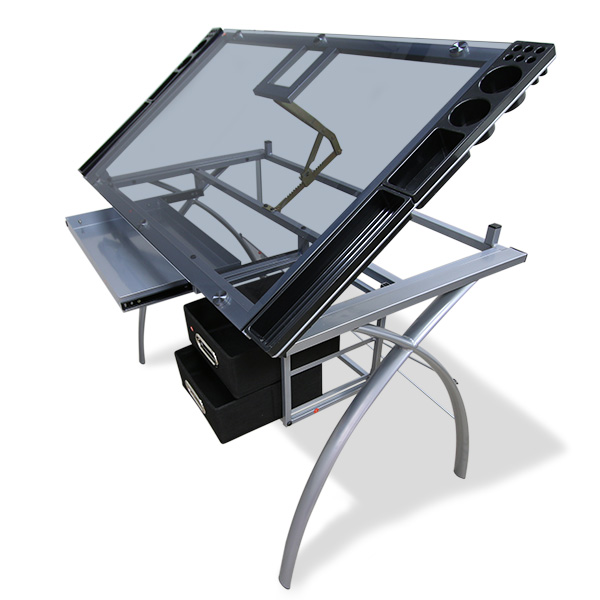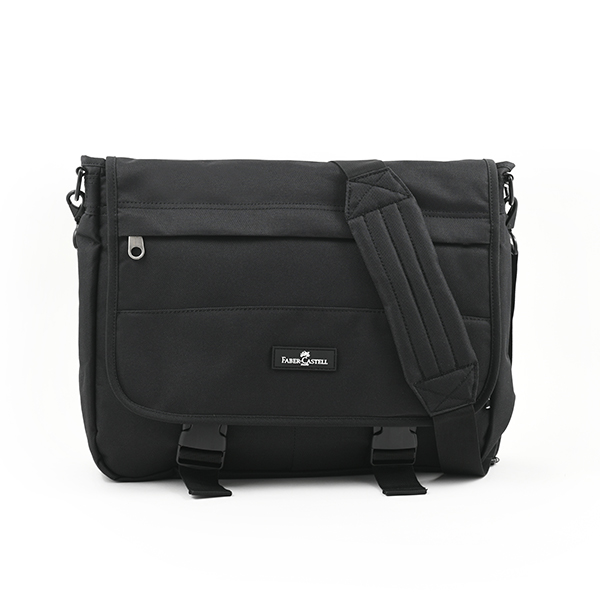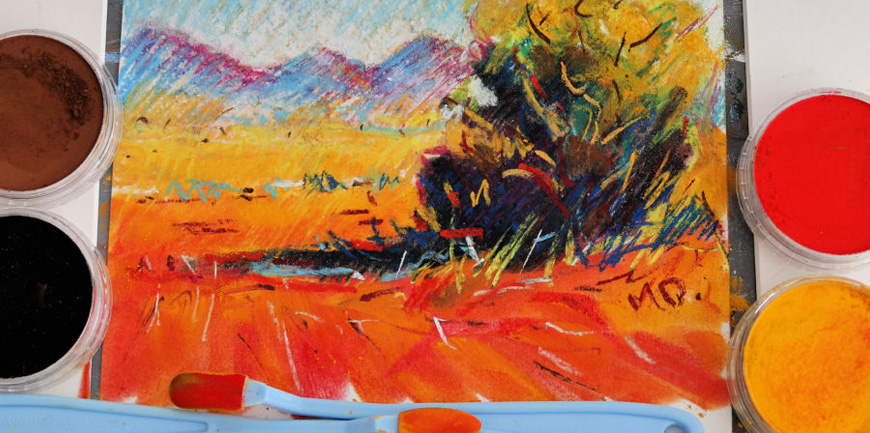
Pastels have been around for a long time. You only have to see Renoir’s sublime works in pastel to appreciate this medium. Characterized by pure pigment, intense colours and a variety of applications pastels have a lot to offer. But pastel sticks have issues too. Soft pastels snap easily. A lot of pastel is wasted in excessive crumbling. Pastel dust is annoying. Sticks get dirty easily and must be carefully stored in foam boxes. Enter PanPastel Colors.
What are PanPastel Colors
Think of pastels in a pan format instead of sticks. Reminds me of makeup pans, not that I have tried makeup of course, but moving on. PanPastel Colors claim to be artist’s quality, intense in hue and lightfast. A point made by the manufacturers is that their pastels mix easily. Artists can expect to mimic the painting experience in dry medium instead of drawing lines with sticks.
How is the pastel medium used? A series of applicators made of soft sponge do the necessary to spread the pastel onto your paper. Because the pastel is extremely fine the applicators do an excellent job of spreading the colors uniformly. I tried textured paper and smooth paper and found no difference in coverage as the sponge “gets into” the textured paper easily. I do prefer textured paper as it holds more pigment too.
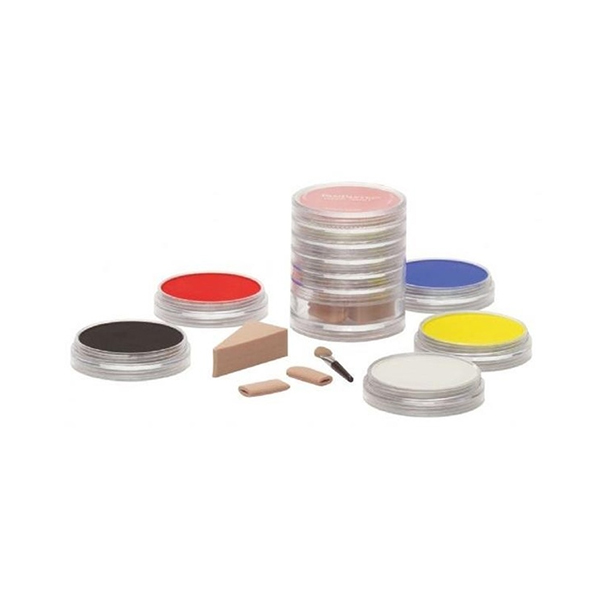
Colour Intensity
There are ninety-two colours in the PanPastel range. I tested a few colours and they are certainly intense. The sketch above confirms the intensity. You can increase this effect by layering the pastel and build up opacity and strength. I tried this approach and also noticed relatively little pastel dust. No doubt the sponge helps to retain some of the dust too. All in all much less dust than with pastel sticks.
Combine with Other Mediums
One advantage I hoped to exploit is the ability to fill up a lot of space with colour very quickly. Usually, I will start a pastel painting off by toning paper with watercolour. Now PanPastel Colors can be used to tone the paper with the time-saving advantage of being dry.
You can apply PanPastel colours over dry watercolour and acrylics too. You can draw over the pastels with pencils for fine details and layering if desired.
Since I prefer a loose approach I tried out pastel sticks over the PanPastel underlayer. The pencil sticks work a treat over the PanPastel surface. This combination opens up opportunities for intense colour and texture. Of course, a textured paper is best to hold the pigment layers, but that is to be expected.
Perfect for Mixed Media

There is a wealth of support information provided by the makers of PanPastel. They do provide many examples of mixed media and surfaces compatible with PanPastel. From encaustic to stencils and digital hand-colouring for something different.
Value for Money
PanPastel Colors claim to have four to five times the coverage of pastel sticks. Plus these are artist quality intense hues that are easy to apply. What about the applicators? The sponges are washable, if necessary, or can be wiped off on a paper towel. The sponges should therefore last well. For me, the versatility of combining the flat, intense colour of PanPastel with the texture of pastel sticks or pencils makes for exciting results.
Conclusion
Strong colours, ease of use and the ability to cover a lot of space quickly makes PanPastel Colors an excellent choice.

